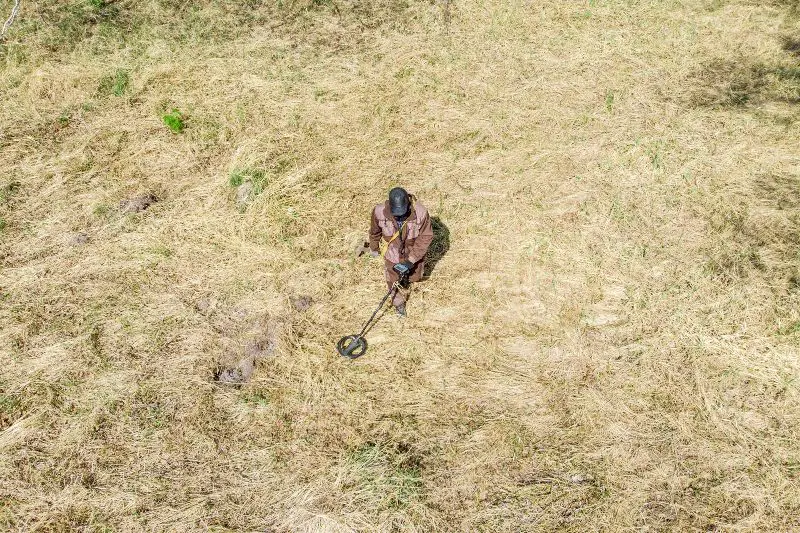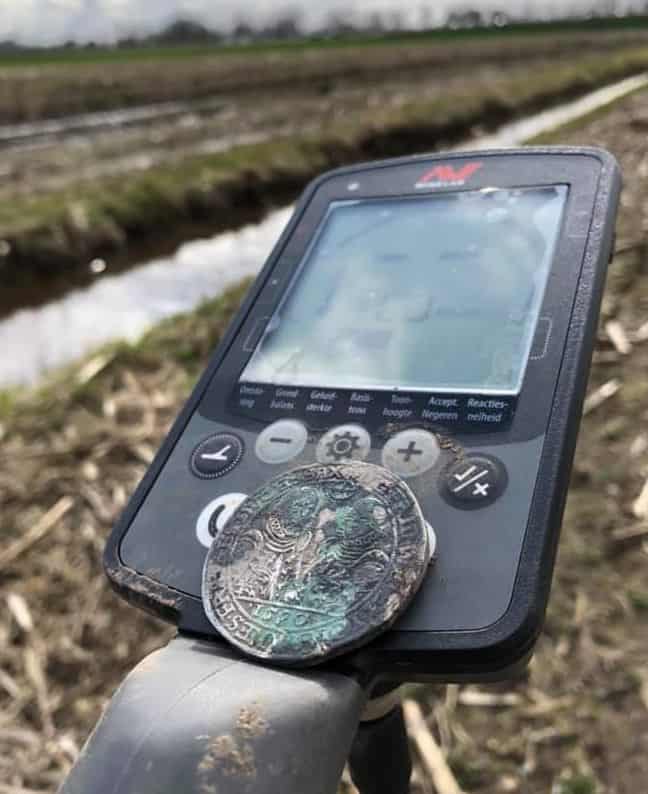
Even if you’ve got a metal detector with great sensitivity capabilities, you still need to know how to set this feature to make the most out of it …
Indeed, setting the sensitivity depends on many factors like the expected targets, ground conditions, amount of trash around as well as many other factors!
This article helps you with the most important steps you should follow …
What does metal detector sensitivity mean?
To put it simply, sensitivity is the measure of a metal detector’s ability to detect or locate a specific size and type of metal.
The better the sensitivity of a detector, the smaller and irregular pieces of metal it can detect.
Sensitivity configurations of your detector is important as you can detect more metal types when you buy a detector with higher sensitivity settings.
How to properly set your metal detector sensitivity?
The sensitivity turned all the way up is not going to help you find more treasure. The higher the sensitivity, the higher the chance of catching unwanted responses as well.
Whether there is a radio station in the area or the ground is heavily mineralized, the higher sensitivity means that you will have a higher chance of picking these up.
Sensitivity, otherwise known as gain on older machines, controls how far your detector will penetrate the ground.
Finding the proper setting is going to take some experimenting. Here are some steps to try and set up the sensitivity settings in your detector:
- Try turning up the sensitivity settings until you receive quite a bit of interference.
- From here, drop the sensitivity settings until you start receiving more accurate signals.
- Signals for metal targets will be pretty obvious, but dealing with unwanted interference can be frustrating.
- Many detectors have an auto option. Go ahead and try that if you are unsure about what settings to use.
For beginner detectors, it may be easier to quick-start your detector as it may only consist of powering on and getting out in the field.
This may be due to the fact that there are minimal search modes (1-2) in entry-level detectors, preset or automatic ground balancing, and sensitivity may be set to a default setting.
While it may be tempting to run your detector at the highest sensitivity all the time, but there are times when you will need to decrease sensitivity to improve performance.
Toning it down allows you to better differentiate between good targets and false signals from ground minerals.
It also filters out the noise from other sources of electromagnetic interference from power lines and highly mineralized soil.
As you develop skills and knowledge about how your settings work, you can set the best levels for sensitivity to get the best results.
Example: Metal Detector with good sensitivity

The Minelab Equinox 600 (Check it Here on Amazon) is a great all-purpose detector as it comes with some really cool features that were earlier only found in the more expensive machines.
This reasonably new detector has also quickly become one of the top metal detectors for beginners due to the simple controls. Here are the pros and cons of the detector:
The main features of this all-purpose detector include:
- Works on VLF technology
- Comes with a DD coil, which is one of the most efficient and universal search coil configurations
- Has a separate saltwater search mode
- Comes with both auto and manual ground balance
- Waterproof and can be submerged up to 10 feet
- It also has a vibration mode which is very useful in loud environments such as the windy seacoast
How can I make my metal detector more sensitive?
Increasing your sensitivity settings will definitely help you detect at greater depths, but only under the right circumstances.
By the way, if you have issues setting your metal detector sensitivity or any other issues, then you should have a look at this metal detector troubleshooting expert guide. You will find it really useful …
The thing with sensitivity is that it can easily backfire. It can actually reduce your target identification capability if you run it too high.
Doing so may drive you crazy with the constant alerts when you are detecting in heavy iron or very trashy spots.
A tip for increasing the sensitivity of the detector is to swing closer to the ground. Swing the detector’s coil as close to the ground as this will increase the depth at which you are detecting and also the sensitivity.
This may seem like a rather obvious tip, but often many detectorists lose sight of how high their coils are when they are outside detecting.
Does ground condition impact metal detector sensitivity?
Ground conditions can have a great influence on your detector’s frequency. This is because a metal detector is a very sensitive equipment and maintaining an optimum level of detection depends on many factors.
It may surprise you to know that even plant vibrations and temperature fluctuations can affect your detector’s frequency and overall sensitivity.
These effects are actually more pronounced when you are operating at a higher frequency, which can typically result in reduced performance and increased chances of false triggering.
Even high moisture and salt content in the soil will throw off the frequency of the detector, creating false metal signals, making it difficult for you to distinguish between actual metal and any other soil product.
Does frequency influence metal detector sensitivity?
Metal detector frequencies typically fall in the range of 3 to 100 kHz. This means that the highest frequency a metal detector can support is 100 kHz.
Usually, though, people prefer to use mid-range frequencies to increase their chances of finding more targets.
Most metal detectors operate on a single frequency. Low frequencies usually have single digit frequencies that are under 10 kHz and are good at finding highly conductive targets such as large metal items and coins.
Higher frequency detectors are over 30 kHz and are extremely sensitive to smaller items and low conductive metals. However, they struggle with ground penetration.
Then there are also selectable frequency detectors known as simultaneous multi-frequency metal detectors.
These are the detectors that allow you to select from one of the several possible frequencies. Being multi-frequency, they are able to analyze the signal from two or even more frequencies at one time.
This multi-frequency analysis can be done either simultaneously or sequentially and at a very high speed.
However, the end result is usually the same and the results from two or more frequencies have to be compared in order to get information that typically cannot be had by analyzing only one single frequency by itself.
The frequency of your detector also depends a lot on the coil you are using.
Does Coil Size & Type influence metal detector sensitivity?
A coil for your detector is similar to say purchasing the tires for your car. Metal detector coils are made for different search conditions and using different coils for different conditions will increase the efficiency and sensitivity of your metal detector.
When you work with a multi-purpose multi-frequency metal detector, it is important that you not only choose a proper sized coil and type, for example, DoubleD or Concentric (mono) but choose its operation frequency as well. You should ideally use low-frequency coils (anywhere between 3 to 7.5 kHz) to look for large targets. The lower the frequency of the coil, the deeper your metal detector can look into the ground, thus you will get increased sensitivity.
At the same time, do not use large sized coils (12 x 13″ with 18.75 kHz frequency) to look for large targets. High frequency will not penetrate too deep and as a result, coils of large diameter will not help you find what you are looking for.
A high-frequency coil (18.5 kHz) is best if you are hunting on the beach and looking for small coins.
Final Thoughts …
If you are a beginner then don’t worry too much about sensitivity, just start by digging for everything your machines detect and take notes whenever you find something by noting the tones intensity and the VDI number …
After several hunts, you will get a feel on when you should activate the sensitivity feature and when you should not.
Finally, it is worth mentionning that setting sensitivity is not the same for all sorts of machines … Each metal detector type has its own technique!
